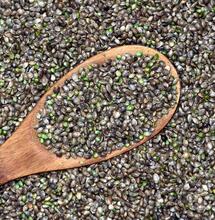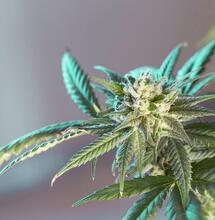Studious Springtime

April is the busiest month for gardeners; if you are behind schedule this year, consulting the following tips may get you back on track.
April is the busiest month for gardeners; if you are behind schedule this year, consulting the following tips may get you back on track.
Spring is here and if your region no longer receives frost, chances are good that you have either already placed your young Cannabis plants outdoors or are planning on soon doing so. Here are a few hints for making sure that your garden is functioning as it should be during this essential month.
Location, Location, Location
If you are living in a new house, you will need to do some recon work in your new grow area. Check for availability of direct sun as well as light contamination sources and predict where the best air flow and sun exposure will be, whether planting straight into the ground or erecting poly-tunnels or a greenhouse. Find a south-facing spot with good drainage and wind exposure if you are planning on building a cold frame for smaller plants - be sure to build a removable or hinged lid to control air flow and light access.
|
Worm castings are an excellent source of nutrient-rich organic matter [Credit: Mathijs Romans] |
Good Soil Produces Good Crops
Prepare the soil by first testing for pH, heavy metals, organic matter, etc. with test kits from local authorities, garden centers or universities with agricultural programs. Alkaline soils can be adjusted by evenly spreading ammonium sulfate and acidic soils improved by dispersing lime and then turning or tilling it into the earth. Cannabis prefers to grow in nutrient-rich, well-drained, loamy dirt; various organic soil amendments, such as kelp, can help you to achieve the perfect nutrient balance.
Remove weeds from outdoor grow spots. Till or turn the soil, but do not overwork it as its structure may be damaged. It is often a good idea to rake the soil surface after tilling or turning, in order to create a penetrable layer for sowing seeds or to ensure that young roots can travel and grow.
Work the soil when it is ready and able to be worked - the structure should be soft and crumbly, rather than too dry, hard and frozen or sloppy and sodden. Planting while the soil is too wet will cause later problems, as this removes the beneficial air pockets and can suffocate and compress seedlings or the roots of young plants. Remember that tilling the soil in late autumn will enable earlier spring planting in the following year.
Dig plots or soil beds and turn with specially-mixed or purchased soil to prepare for when young plants are ready for transplanting. Add peat moss or compost as needed to change the organic content and consistency of the soil, and creating raised beds will increase drainage potential. Another option would be to purchase grow bags or pots and organic soil from a garden supply center. If your seedlings were started in peat pots, be sure to transplant them completely underneath the surface layer of soil, as exposed peat pot tops can wick moisture away from the root ball and stress the plants.
If employing your outdoor crop from last year as direct compost, remember that non-composted organic material will be broken down by microorganisms that require nitrogen for such activity. Do not forget to replenish this essential element by supplementing your soil with nitrogen-rich fertilizer, being careful to avoid over-fertilizing.
Earthworms are an essential component of healthy dirt that can be applied directly to the soil beds or contained in worm or compost bins. Their tunneling creates ventilation and irrigation tunnels throughout the soil and their castings (known as vermicompost) are great sources of rich, organic matter that aids in keeping gardens happy and well-fed.
Fresh mulch can be added in a collar around the base of your Cannabis plants in order to help the soil retain moisture and prevent weed growth (of the non-desirable variety). Turn or fluff up older mulch to let air and water through.
Stock the Cannabis Plant Pantry
Check the expiration date of your nutrient products and wipe down dusty or sticky bottles - this is something that should become habitual as your gardening career progresses, especially at the end of each crop cycle. Replace expired bottles and safely dispose of them. Springtime is also a good time to source local products each year; for example, local farms are a great place from which to get bone meal, blood or manure (chicken, cow and horse manure are commonly used, but unlike those, goat manure does not require composting before being applied to soil beds.)
|
All trimming and harvesting implements should be cleaned and sterilized for the new season [Credit: Ragesoss] |
Accessorize and Prepare for Supply Shortages
Stock up on necessities such as seedling or regular soil, new pots, ingredients for nutrient teas, rooting cubes, pH meters, nutrient measures, etc. Replace broken equipment and gardening supplies and purchase or upgrade equipment when possible so that you do not have to rush or panic when something runs out or breaks. Replenish nutrient stocks or ingredients for teas, etc.
Sterilize and sharpen any cutting implements, including blades for clone cutting and harvesting shears.
Clean and prepare a rain barrel or reservoir for the season and ensure that irrigation tubes and drips, plus watering cans, are all clean and ready to use. Test irrigation systems beforehand to prevent nasty surprises on hot days.
If you are planning on employing poly-tunnels or a greenhouse, this is your last chance to sterilize the space and arrange tables, spare pots, gardening tools, seedling cubes, etc. for easy access. Check ventilation and hang any needed greenhouse lights before the plants get in the way.



